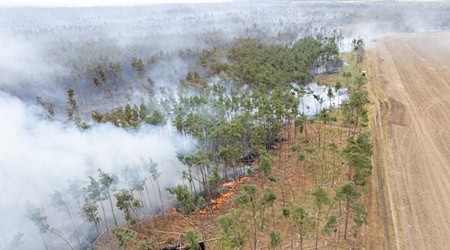Global warming is hitting Saxony, Saxony-Anhalt and Thuringia particularly hard compared to the global average. The average annual temperature in central Germany has risen by 1.1 degrees over the past 30 years - globally it was 1.05 degrees, according to the Central Germany Climate Report. In the document, the three federal states and the German Weather Service jointly present the effects of climate change for Central Germany for the first time.
Depending on how consistently the climate is protected, people must expect a further rise in temperature in the future, as calculations show according to the report. Specifically, the scenarios range from average temperatures of 9.8 to 12.4 degrees Celsius at the end of the century (2071 to 2100) in the region. According to the report, the current value is 9.2 degrees Celsius.
Rain shifts from summer to winter
According to the statistics, the number of hot days per year, i.e. days with a maximum air temperature of 30 degrees Celsius or higher, is changing noticeably. While there were statistically three hot days per year in the 1950s, there are currently an average of twelve per year, according to the report.
As far as precipitation is concerned, rainfall in particular is shifting from summer to winter. The amount of rain that falls in winter has increased by 27 liters per square meter since 1881/1882 - an increase of 19 percent. In summer, however, the number of consecutive dry days has increased, with consequences for inland shipping and agriculture, for example. Overall, the amount of precipitation per year remains constant. According to the report, this is also likely to be the case in the future.
How the climate changes has major consequences for nature: for example, for the start and duration of the growing season, for soil moisture or the frequency of closed snow cover. The 56-page climate report contains a wealth of data that presents "current knowledge about the consequences of climate change for the central German region". It can be viewed online.
Copyright 2024, dpa (www.dpa.de). All rights reserved










